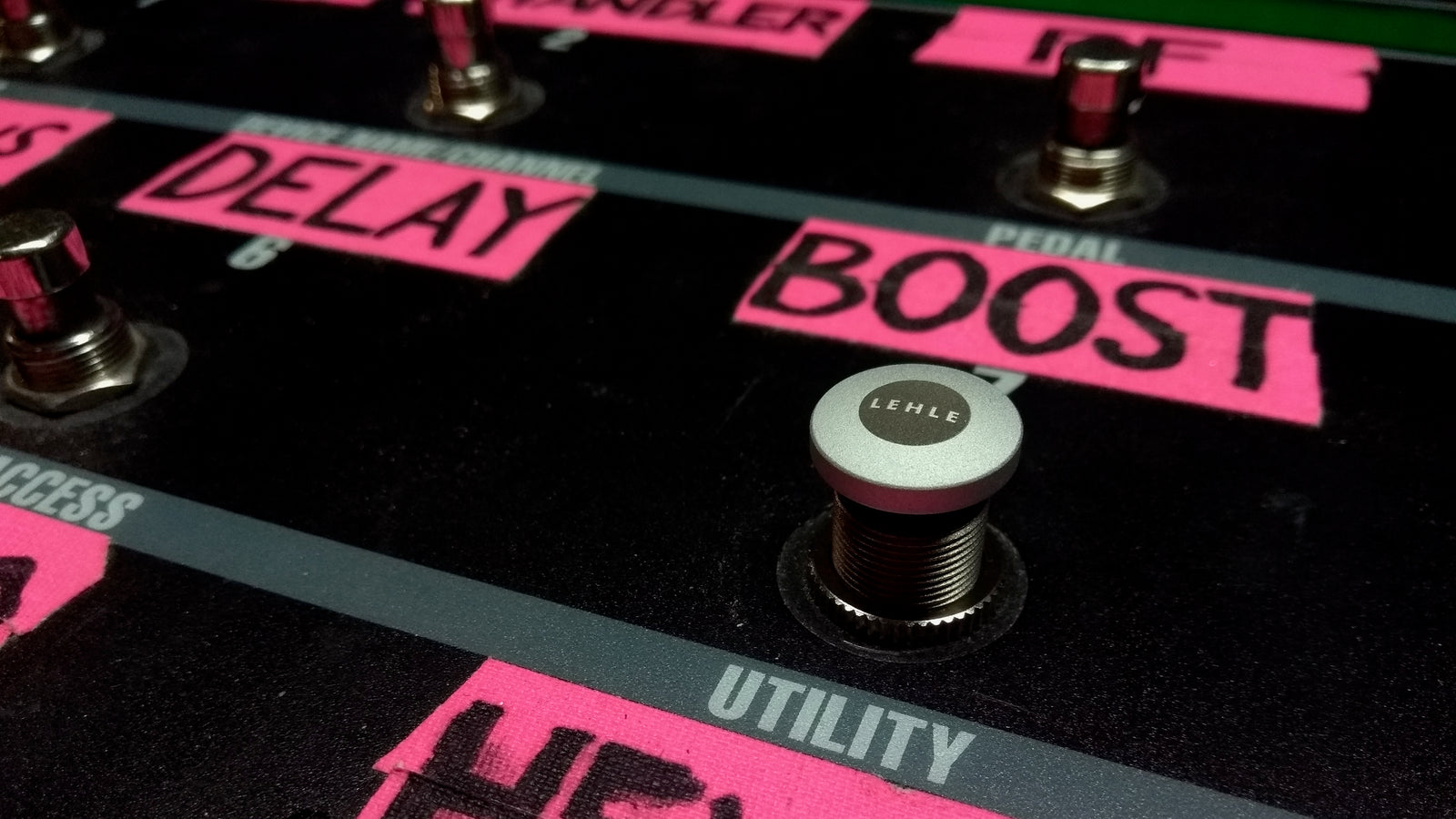
Jaco was a true super star in his time. His playing had a profound influence on virtually every bass player that has come after him. Pastorius also made a lasting impression on a young Trujillo. In the documentary Flea, Bootsy Collins, Geddy Lee and Sting are among the many bassists who talk about the influence Jaco’s playing style had on their music.
Jaco Pastorius’ path to music was purely autodidactic. He brought rockstar-style adoration into the somewhat dry realms of Jazz music, inspiring many to take up the bass, an instrument often overshadowed by others. Jaco also had a strong personal style and approach, which made him even more fascinating. His sartorial choices, his personal looks, with his long flowing hair and a grin on his face, gave every bass player on the planet carte blanche to be themselves on stage. Gone were the days of the worst musician in the band plonking away harmlessly in the background.
Tragically, Jaco’s life also had a merciless side to it. There’s a very few artists in popular culture, who rose to fame as meteorically and shone as brightly, only to face such a brutally tragic fate.

THE EARLIEST IMPETUS for Jaco to change the role of the electric bass came in form of his first child. He said to his brother:
"If I want to feed my family, I've got to do something on the electric bass that has been never done before".

Jaco had started out on double bass, but the Florida climate wreaked havoc on his instrument. Fed up with his problems keeping his double bass in working condition, he took his Fender Jazz Bass, removed the frets with a knife, and finished it all off by using epoxy resin to smooth the fingerboard. The result was a new and exciting sound in amplified music; the fretless bass combined the flexibility and fluidity of a double bass with the punchy mid-range the Jazz Bass was known for. Jaco’s new sound became genre-defining, and prompted hundreds of other players around the world to try to emulate it.
Jaco had been working in different local bands on the Soul- and Funk-circuit. He quickly started to develop a seamless technique that bolstered his overflowing musicality. He was an arrogant young player, but that worked to his advantage in the end. When Jaco met Blood, Sweat & Tears’ Bobby Colombo – when the band played in Florida in 1974 – he simply told him:
“I’m Jaco Pastorius, the greatest bass player in the world!”
This meeting lead to several jams, and finally to a record deal with Epic. Jaco’s eponymous first solo album – released in 1976 – showcased the man’s considerable talents in many ways. I don’t think any other record has changed the history of the electric bass as profoundly. Jaco was a mere 24 years old when the record came out.

- The opener is Jaco’s cover of Charlie Parker’s saxophone number “Donna Lee”, which he delivers with fire and a great sense of rhythm.
- On “Come On, Come Over” he dishes up 16th-note finger style Funk, based on extremely precise right hand picking and left hand damping (listen to the phrase starting at 0:56, for example).
- Jaco’s signature lyrical melody playing is to the fore on the track “Continuum”. His bass sounds like a mix of a classical cello and a double bass. The chorus effect is achieve by manually double-tracking the bass.
- “Portrait Of Tracy” was written for his wife. The track uses mostly natural and artificial harmonics, which per se weren’t a new thing, but in Jaco’s hands the results are nothing short of breathtaking.
WEATHER REPORT was the most famous modern Jazz band of the day. The band’s self-styled leader, keyboardist Joe Zawinul, was an imaginative composer. Jaco adored the band, and finally approached Zawinul in his usual, not-very-modest fashion, introducing himself again as “the greatest bass player on the planet”.
Even though Zawinul felt quite bemused by the youngster’s cocky attitude, Jaco’s solo album had also made quite an impression on the band leader. He invited the bass player to some of the final session’s for Weather Report’s upcoming album, called Black Market. At first Jaco tried to blind the other band members with his technique, but Zawinul asked Pastorius to tone it down a little bit. He had especially liked the cello-style lyrical sound’s on Jaco’s album, and was very keen to hear something similar on his song “Cannon Ball”. This track finally catapulted Jaco Pastorius to global stardom.
Weather Report’s next LP – Heavy Weather – was very successful, and is now recognised as one of the essential works in Fusion Jazz. The album’s opener, Joe Zawinul’s composition “Birdland”, got a lot of radio play, boosting the album’s sales to new heights. Jaco plays the track’s melody by using his thumb to create artificial harmonics. This technique was totally new on electric bass then, even though it is used widely these days (the example starts at 0:15).
Jaco’s composition “Teen Town” was another important track on Heavy Weather. This song is still a milestone by which a bass player’s dexterity and technique are measured. Zawinul at first didn’t think much of the track, but he bowed to his disciple’s musicality in the end and allowed the track on the album. The term Fusion Jazz is given a new meaning by “Teen Town”.
Due to the success of Heavy Weather Jazz became part of the mainstream, and even some Rock fans found their way to Weather Report shows. Jaco enthralled the audience by playing bare chested, giving his all, and using the distortion of his Acoustic 360 amplifier to bolster his solos. He was also an early user of the MXR Digital Delay, which he used for chorus-style effects and to shape loop-type backgrounds. He often underlined his spiritual kinship to Jimi Hendrix by playing excerpts of “Third Stone From The Sun” in his solos. The Jazz crowd loved their new golden boy.
Jaco had become the hottest commodity in music, and he was asked to play on sessions and gigs by stars, such as Pat Metheny and Joni Mitchell. Unfortunately Jaco’s private life began unravelling at the same time. Jaco divorced his wife and left his family to concentrate fully on his music.
IN 1979 a historic show had been organised in Havana. A whole passenger jet full of American Jazz greats had flown over to the communist country to play with local musicians. Sadly, the first manifestations of mental instability started creeping up in Jaco’s behaviour on this pivotal trip. He managed to get into a fierce war of words with a band of musicians from Puerto Rico, and Joe Zawinul had to physically intervene to prevent serious bodily harm. Jaco felt embarrassed by Zawinul’s intervention, which in turn started to erode trust between the two bandmates.
One of the planned high points of the Cuban shows had been a new supergroup – the Trio Of Doom – formed by Jaco, guitarist John McLaughlin and drummer Tony Williams, but the idea went badly pear-shaped already during the first gig. Jaco was in a spiteful and vindictive mood, sabotaging the greatly-anticipated performance by playing extended solos, bombarding the other players with rapid-fire harmonics, and by using strange chord changes. The show was a disaster.

Soon, Joni Mitchell, too, got more than her fair share of Jaco’s onstage antics. He inserted bass solos in her live set out of the blue, and without permission. He also often moved Joni’s microphone from the centre to the side of the stage, appeared late to gigs, and covered the stage in talcum powder to make it easier for him to dance wildly during the show.

Joni’s band had been slated to film their slot at the prestigious Montreux Jazz Festival, and everyone was nervous about Jaco’s attitude and behaviour. Luckily for Joni, Jaco’s wife and his mother were present in the audience, which had a calming effect on him, making him play one of his best live shows ever. The video shows Jaco as a cooperative band member among the other famous members.
JACO WANTED TO PUSH FORWARD with his career and became increasingly frustrated with his place in Weather Report, which was led dictatorially by Joe Zawinul. The pressure soon became unbearable. Jaco felt increasingly unhappy about his earlier recordings – he was keen to create something totally new. His stature in Jazz circles had become so legendary that he had no problem negotiating a very lucrative solo-deal with Warner Brothers.
Jaco assembled his own band for his new record. He named the band Word of Mouth. The band spent a very long time in the studio, trying to realise Jaco’s vision. The recording costs grew to staggering heights. One example was the use of 9,000 dollars on a 30-man string orchestra for overdubs onto two songs, then having the costly overdubs mixed out of the final master.

The biggest problem was posed by a track that was recorded over a finished rhythm track in such a way, that the participating musicians weren’t allowed to hear the other players’ parts. Pastorius named this experimental piece “Crisis”. Jaco wanted “Crisis” to open the follow-up to his legendary first solo album. Warner Brothers didn’t think so. They tried in vain to persuade their new star to change the sequencing of his record. In the end the headstrong artist got what he wanted, and the record label was forced to go along with his wishes. Jaco felt the album Word of Mouth was a genuine masterpiece, but his label was nervous about recouping their considerable investment.
Even though Pastorius’ and Zawinul’s relationship has become increasingly strained, Jaco still looked up to Weather Report’s main man as his mentor. He played Zawinul some of the tracks while the recording sessions for Word of Mouth were ongoing, hoping for some sort of pointers and constructive criticism. When the album had been released Joe Zawinul’s comment was as laconic as it was curt:
“Sounds like typical high school big band bullshit to me.”
The famous bandleader clearly wanted to put down his “apprentice”, who was becoming increasingly more famous. Joe’s comments hurt Jaco badly, and their relationship never recovered.
In truth the album has its moments. I believe that a less avant-garde album cover and a more accessible opening track could have turned “Word of Mouth” into a huge seller and global hit. My personal favourite is “Liberty City”, which would have made a great opener.
JACO TOOK HIS ALBUM and his Word of Mouth band on a world tour. He managed to assemble a fantastic line-up, which, for example, pleased his Japanese fans, who like to listen to highly accomplished musicians. He was welcomed in Japan like a Rock star. The band played 20,000-seater stadiums. Some of the shows were almost catastrophic, truth be told, due to Pastorius’ worsening mental state. His soloing became the fiercest it has ever been. Jaco painted his face as if he were going into battle, he played as loud as Hendrix in his day, his dress sense became ever more outlandish, he started wearing a mohawk, and sometimes even drove his motorbike straight into hotel lounges, which many conservative Japanese disapproved of.

Jaco had married his second wife, and the pair had been blessed with a pair of twin sons. Everything should have been hunky dory, but a storm was brewing beneath the calm surface. Jaco had started work on a project called Holiday For Pans, which was to feature steel drums heavily. Warner, on the other hand, wanted to drop him, after the disappointing sales of Word of Mouth. They even wanted to get rid of all the session tapes. Jaco’s mental troubles worsened, and his decline into self-destructive behaviour began in earnest.
THINGS WENT FROM BAD TO WORSE when Jaco decided to move to New York City from his native Florida. He played club gigs with guitarist Mike Stern, who had recently been fired by Miles Davis because of his worsening drug problems. Mike tried hard to become clean, but Jaco’s increasingly wild antics didn’t really provide Stern with any support.
The duo descended into a uninhibited booze- and drug-fuelled lifestyle in the Big Apple. Their show still sold very well, thanks to Jaco’s unparalleled stage presence. He had grown into a global star and a genuine living legend of Jazz, but New Yorkers soon started seeing a different side to Jaco.
Pastorius started playing with street musicians, and spend a lot of his time with drug addicts and prostitutes. There’s a famous story of Jaco playing a young busker’s bass guitar until he broke the young lad’s battery-powered amp. When the young busker complained and asked for compensation, Jaco replied in his typically arrogant fashion:
“Don’t you know who I am?”
When Guitar Player magazine put Jaco on the cover, Pastorius got back his self-esteem for a while. He bought a whole bunch of the issue, and handed the magazine out to his friend and acquaintances, as if trying to prove that all was well. In truth he was barely hanging on to the last shreds of his sanity.

As if by magic a company got Jaco to tape an instructional video for them, in which he shows his techniques and his approach to another bass legend, Jerry Jemmott. His legendary instrument had recently been stolen, during a night slept on the pavement, so Jaco had to use a borrowed bass. The video shows a slightly disoriented man, who nonetheless plays brilliantly. This unique video is mandatory viewing for all Jaco fans.
Jaco started to become a real danger to himself and others, and finally the news of his state reached the ears of his family. He was taken to New York’s Bellevue Hospital’s psychiatric ward. Jaco Pastorius was diagnosed with an especially difficult form of bipolar mental disorder. Jaco’s manic and depressive phases would change very rapidly, sometimes they would even overlap, which made finding the right medication extremely difficult.

AFTER SEVEN WEEKS AT THE BELLEVUE Jaco returned to Florida, where he spelt on the beach or on the sofas of friends. He owned virtually no clothes, and he had no instrument or band. He found it very hard to accept his mental illness, and acted as if he didn’t care anymore. His alcohol- and drug abuse wreaked havoc with his mental state, and he quickly turned into a persona non grata for many. In only a couple of short years the former Fusion Jazz superstar had become a homeless addict.

On September 11th, 1987, Jaco managed to invade the stage in the middle of Carlos Santana’s gig. A few hours later Jaco tried to enter one of the night clubs he had hung out in, but the bouncers refused to let the dirty and dishevelled maniac they were seeing enter. Jaco got so enraged that he started banging at the doors, demanding to be let in. One of the bouncers beat up Jaco badly, with tragic consequences. The musician fell and hit his head hard on the curb. Jaco was taken to hospital with a fractured skull, and he fell into a coma. Though some claim that Jaco suffered an accident, eyewitnesses told the press that the doorman – who was into karate – had beaten Jaco’s face to a pulp. Jaco Pastorius died of his injuries at the hospital only ten days later.

MEMORIES FROM MY OWN YOUTH returned when I watched the documentary, because, like many other bassists, I had been a fan Jaco Pastorius’ music. I might not have idolised the man and all of his musical endeavours, but I liked his flamboyance and attitude. Jaco made us believe in the validity of the electric bass as a serious instrument. A bass player could step out of the shadows and into the spotlight.
In retrospect I have often wondered, whether his example was helpful to me, or not. The same could be asked of many of the bassists, who try to follow Jaco’s musical path, because his was an exceptionally stony road. Pastorius was an exceptionally talented virtuoso and wholly in a class of his own, which means that trying to copy his style doesn’t necessarily mean that you will succeed in capturing his immediacy and soulfulness. I, too, fell in this trap for a while, before realising that Jaco should be used as an inspiration, but not as a blueprint.
The only Finnish player, who reaches Jaco’s levels of musicianship and intensity, in my opinion, is Lauri Porra. His playing draws a lot of inspiration from Pastorius, but Porra has managed to find his own, unique voice. Porra’s solo albums are reaching the same levels of compositional skill, clever arrangements and technical prowess as Jaco’s. Let’s hope Porra – a great-grandson of Finnish composer Jean Sibelius – will keep on continuing his musical journey.

Other young bassist have been led by Jaco’s example to put technique before substance, forgetting what is important in music. It’s true that there is a certain place for creativity and technical chops, but the bass plays an important role that shouldn’t be forgotten. The bass anchors both the rhythmic as well as the harmonic content of music, which is why many feel it’s the most important instrument in a band.
5.12.2015 Kimmo Aroluoma
The writer is the owner of Custom Boards Finland. He is a veteran guitar tech who has toured for years with Finnish bands HIM, Amorphis, Michael Monroe, The Rasmus and Von Hertzen Brothers. Today he designs pedalboards and runs his own web shop in Helsinki, Finland.
*****




